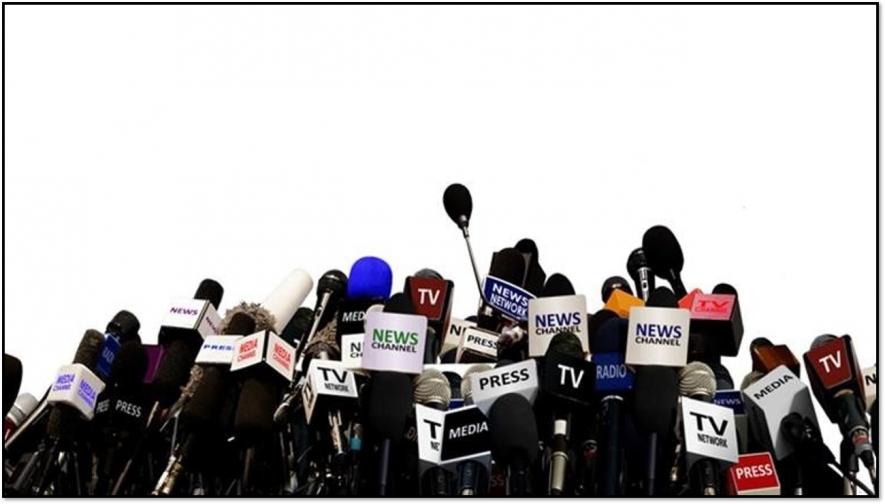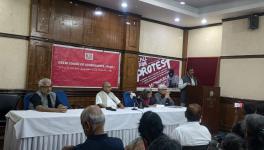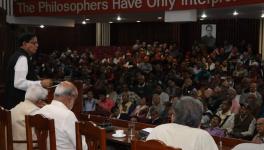Media Pluralism in India Under Threat: RSF

Representational image.
New Delhi: Reporters Without Borders (RSF) and Data Leads recently released the India Media Ownership Monitor (MOM) -- india.mom-rsf.org - in Delhi. MOM is a database, which lists ownership details of news media in developing countries that rank low on the World Press Freedom Index. India ranks 140 among 180 countries on the index making it among the more hostile places in the world for journalists.
RSF developed MOM in 2015 and has used its generic methodology to map media ownership in 20 countries. The project is funded by the German Ministry of Economic Development and Cooperation and inspired by the Media Pluralism Monitor, which monitors media pluralism in the European Union. RSF partnered with Data Leads to execute the project in India.
The India MOM database lists the ownership details of 58 media outlets based on audience share. India currently has over 17,000 dailies, 38,000 weeklies and monthlies and 300 news channels across various languages. The India database looks at 25 print, 23 television and nine online and one radio news organisation across 10 Indian languages. The database lists organisations by the medium of news production -- print, television, online and radio--and owners. Currently, the database is available only in English.
Data has been sourced from publicly available sources including the company filings, information available with the website of the Ministry of Corporate Affairs and the Indian Readership Survey. No Indian news organisation, except The Print responded to questions raised by RSF and Data Leads. Broadcast Audience Research Council (BARC), the sole provider of television viewership data in India, also refused RSF data for the project. BARC is promoted by television broadcasters, advertisers and advertising agencies in India. RSF also claims that there aren’t unique measures of audience share for online news media.
The database ranks India high-risk on media plurality despite a burgeoning news media market. The report observes high media audience concentration, highly unregulated cross-media ownership, high political control and funding, lack of transparency and missing data.
Four dailies each in English--Times of India, Hindustan Times, The Hindu and The Economic Times--and Hindi--Dainik Jagran, Hindustan, Amar Ujala and Dainik Bhaskar--and two each in Malayalam--Malayala Manorama and Mathrubhumi--and Punjabi--Jag Bani and Ajit--control more than 75% audience in the respective languages.
The report while noting political control and funding of newspapers in India says that regional print markets are highly concentrated and the leading outlets are owned by individuals with clear political affiliations. It lists Dainik Jagran, Hindustan, Hindustan Times, Sakal, Lokmat and Dinakaran as examples of newspapers where owners have clear political affiliations. It also highlights political affiliations of news television media owners including, Subhash Chandra of the Essel Group, Rajeev Chandrashekhar of Jupiter Capital, Baijayant Jay Panda of Odisha TV and Riniki Bhuyan Sarma of News Live.
“Within the sample of this study, as many as 10 media owners have direct or indirect links with politics while some of them even represent a political party. There are countless others, however, who have refused to declare their political affiliations, but yet own media companies. Between them, media owners with political links control a sizeable share of viewership/readership,” the report says.
In March this year, Scroll.in reported how Rajeev Chandrashekhar, a Bharatiya Janata Party MP in the Rajya Sabha, used legal loopholes to conceal his media holdings, including Asianet News and Republic TV, in his 2018 Rajya Sabha election affidavits. Arnab Goswami, the editor-in-chief of Republic TV bought back shares of his company from Chandrashekhar in May this year.
Noting that government advertisements are the bread and butter for news media, the report notes that the government exploits this dependency. “[Advertisements are] ...a subtle and innocuous way of controlling the political discourse and limiting critical reportage. Additionally urging media outlets to perform self-censorship through several pressure strategies happens to be a tool for control,” the report says.
Between 2017-18, at least three editors left their jobs at leading Indian news organisations after publishing articles critical of Prime Minister Narendra Modi and the Indian government. The most prominent among them Bobby Ghosh’s exit was announced by the proprietor of Hindustan Times in September 2017. The Wire citing unnamed sources reported that Bhartia met Modi and was under pressure to relieve Ghosh for his editorial stand, especially for developing Hate Tracker, a database of hate crime in India, which the company has since withdrawn.
In the past, mapping media ownership in India has been attempted by The Hoot and NewsLaundry. Like the previous attempts India MOM does not publish financials of companies, including loans and liabilities. Loans given by corporations to news media is another way of limiting critical reporting, controlling public debate and obfuscating ownership details. For example, in 2018, an order by the Securities and Exchange Board of India made public the ownership details of New Delhi Television (NDTV) Limited. The order directed a company owned by a close associate of Mukesh Ambani, the world’s richest Indian and the owner of Network18, a news and entertainment conglomerate, to make an open offer within 45 days to acquire shares of NDTV Ltd because it had indirectly acquired a 52% controlling stake in the television company by issuing a loan of Rs 3.5 billion in 2009. Ambani also owns Reliance Jio, the second largest telecom provider in India.
The writer is an independent journalist.
Get the latest reports & analysis with people's perspective on Protests, movements & deep analytical videos, discussions of the current affairs in your Telegram app. Subscribe to NewsClick's Telegram channel & get Real-Time updates on stories, as they get published on our website.
























